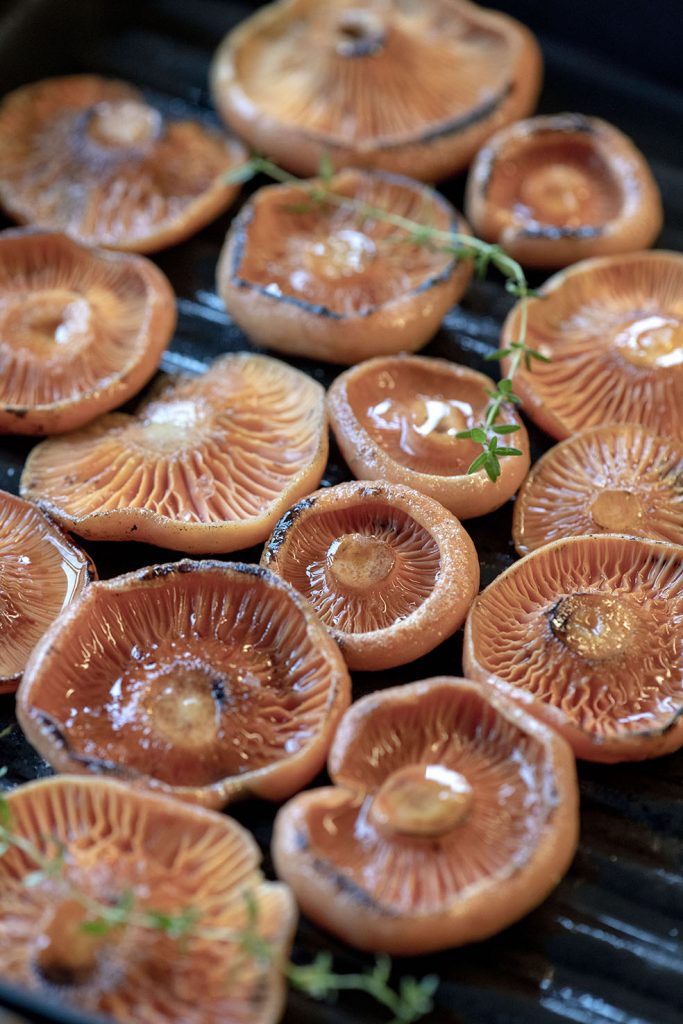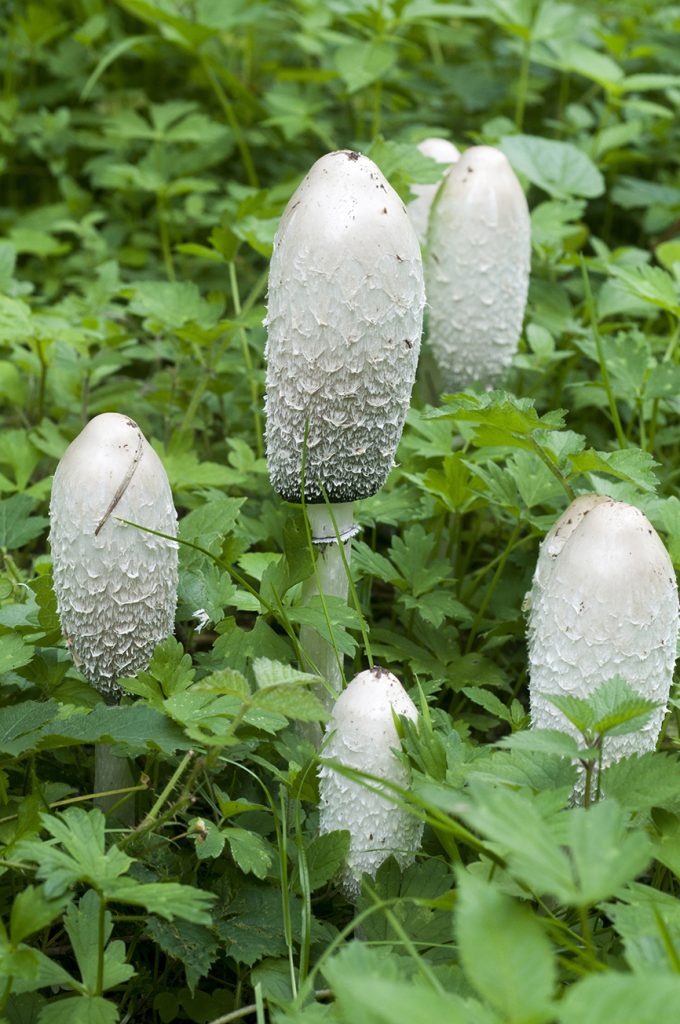Slow Mushrooming
Alison Pouliot
Fungi are old. Very old. They’ve inhabited the planet for millennia, colonising new environments, diversifying, enabling life on land. Across continents and cultures Homo sapiens have tapped into their quirks and qualities for thousands of years. They feature in our fairy tales and fables, legends and lore. In recent years, increasing awareness of fungi as food and medicine has seen foraging grow in popularity.
Today we live in a fast forward world. Meeting deadlines, improving productivity, increasing efficiency. Life has accelerated to such a speed that we abbreviate intimacy and communicate with emojis. In our rush to meet the next demand or deadline, we trade knowledge for googling. We’ve lost the touch from keeping in touch. But there are those who are pausing for just moment, to remind themselves, there’s another way.
Slowly Slowly . . .
Finding fungi requires slowness, not speed. It’s about careful observation, noticing subtle differences. Finding fungi as food is about learning a few species thoroughly, rather than many superficially. This is the notion of slow mushrooming. Like slow food or slow art, it’s about care, attention to detail and developing deep knowledge. It’s about revisiting traditions and gleaning the latest research. It’s about being aware of how our choices and actions affect the world around us.
Fungi are diverse and ubiquitous. There are few places that you won’t find them. Some are delicious and others are deadly. With interest in foraging for wild food on the rise, learning to accurately identify fungi through slow mushrooming reduces the risk of harming yourself or the environment.
Desirable or Deadly?

What is an edible mushroom? Edibility can be a little ambiguous encompassing everything from ‘not poisonous’ to ‘delicious’. Most species are not likely to be poisonous, but few are apetising. Fungi can be categorised as palatable; edible; edible with caveats; of unconfirmed edibility; suspect; poisonous; or deadly poisonous. These are useful but are sometimes imprecise and confusing. For example, palatability (taste, smell and texture) is subjective. Some poisonous species can be rendered edible through treatment. Others can be deadly when even the tiniest quantity is consumed. Most importantly, every forager seeking edible fungi should learn the major toxic lookalike species. After all, it’s always better to leave an edible mushroom uneaten, than consume a toxic one.
Finding reliable information about fungi can be a tricky business. Online reports about the edibility of fungi are often inconsistent and conflicting. These differences can reflect cultural preferences and biases but are also due to varying conceptions of risk and different levels of taxonomic skill and knowledge. A swathe of unsubstantiated opinions can complicate things further. Finding consensus about the edibility of a species among the profusion of websites, blogs and other online platforms means being able to recognise evidence-based data from reliable sources. The most reliable are those that provide first-hand information, evidence of consumption, and have been scientifically reviewed.
Once you’ve found yourself a reliable field guide, expert or other source of information, it’s time to head to the field!
Notice Your Surrounds

Slow mushrooming begins with understanding the ecological significance of fungi in the context of their environments. Fungi are not isolated entities. All live in close association with other organisms and their habitats. Accurately identifying a mushroom means being able to recognise, for example, the habitat types or plants with which a particular fungus associates.
Many fungi form symbioses (alliances) with other organisms. Those that form between fungi and plants are known as mycorrhizal symbioses. Recognising these relationships has obvious benefits for the forager. Being able to identify the tree genera with which a particular fungus is associated saves the forager from aimless wandering around in the ‘wrong’ habitat.
Finding fungi also means being able to anticipate the type of substrate (growing medium) in which a particular species grows. Some fungi live in soil, others in leaf litter, some in herbivore scats, and many species grow in wood. Some grow in living trees, others in fallen wood and some on a particular type of wood or at a particular age. There are those fungi that are only found in undisturbed habitats while others favour ruderal (disturbed) environments. Knowing the substrate type where your sought after species grows helps you identify a fungus by eliminating all those substrate types where it doesn’t grow.
Keep in mind that seeing a particular mushroom species once doesn’t mean you’ll be able to recognise it next time you encounter it. Identification skills develop from direct experience in the field and observing a species in different places and conditions over time and learning to recognise the important diagnostic features. Observing the same species in different habitats and situations allows you to become familiar with the extent of variation that can occur within that species. As a mushroom develops, it can change in shape, form and colour. This is further influenced by where and in what it is growing, as well exposure to different weather conditions.
Colour and Form

Homo sapiens have evolved to notice colour. It’s usually the first thing we notice and comment on when we spot a mushroom. Colour is important for identifying fungi, but it can also be an unreliable feature because it can vary greatly within a species. Colour can change as a natural part of the developmental process or with exposure to wind, sun or rain. Many fungi share similar colours but flipping through a field guide looking for a mushroom of a similar colour will only get you so far. Hence it is important to consider colour and morphology (shape, texture and general appearance) in tandem.
Becoming familiar with the different parts of a mushroom (e.g. pileus, lamellae, stipe) and the variations both within and between species, is the starting point to finding your way around a mushroom. A hand lens (x 10 magnification) will help you observe finer features. Don’t forget to also use your sense of touch. Mushrooms vary enormously in texture and touch reveals details that are always apparent to the naked eye. Allow your fingers to discover whether, for example, a specimen is smooth, velvety, rubbery or buttery.
These are just a few hints to get you started. You could spend a whole day, week or month wandering around simply feeling mushrooms to become familiar with their different textures. Or you could smell them all to familiarise your nose with the great array of fungus scents and odours. Or you might simply begin by getting to know your local plant species and the fungi that associate with them. All these things take time and gradually your accumulated observation develops into knowledge. The good news, it seems, is that slow mushrooming is growing fast.
Dr Alison Pouliot is an ecologist, author and environmental photographer with a focus on fungi. As an ecologist, Alison researches fungi with the objective and analytical tools of science. As someone who daily wanders in the bush, she relates to fungi with an aesthetic and sensory appreciation; a natural history of experience. Alison draws on both worldviews in her efforts to stir a broader public consciousness in the way we understand and relate to the fungi, the forest and all life.
Alison is the author of The Allure of Fungi and co-author of Wild Mushrooming: A Guide for Foragers. Published by the CSIRO.
